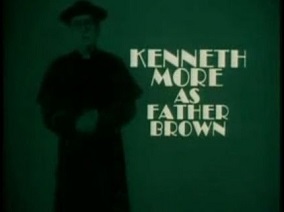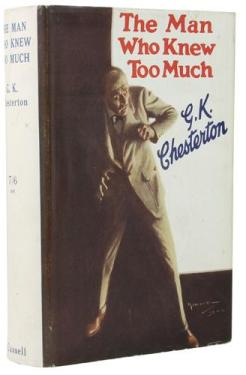
Giovanni di Pietro di Bernardone, known as Francis of Assisi, was an Italian mystic, poet, and Catholic friar who founded the religious order of the Franciscans. Inspired to lead a Christian life of poverty, he became a beggar and itinerant preacher.

Gilbert Keith Chesterton was an English author, philosopher, Christian apologist, and literary and art critic.

Slavoj Žižek is a Slovenian philosopher, cultural theorist and public intellectual.

The "locked-room" or "impossible crime" mystery is a type of crime seen in crime and detective fiction. The crime in question, typically murder, is committed in circumstances under which it appeared impossible for the perpetrator to enter the crime scene, commit the crime, and leave undetected. The crime in question typically involves a situation whereby an intruder could not have left; for example the original literal "locked room": a murder victim found in a windowless room locked from the inside at the time of discovery. Following other conventions of classic detective fiction, the reader is normally presented with the puzzle and all of the clues, and is encouraged to solve the mystery before the solution is revealed in a dramatic climax.

Father Brown is a fictional Roman Catholic priest and amateur detective. He is featured in 53 short stories by English author G. K. Chesterton, published between 1910 and 1936. Father Brown solves mysteries and crimes using his intuition and keen understanding of human nature. Chesterton loosely based him on the Rt Rev. Msgr John O'Connor (1870–1952), a parish priest in Bradford, who was involved in Chesterton's conversion to Catholicism in 1922. Since 2013, the character has been portrayed by Mark Williams in the ongoing BBC Television Series Father Brown.

Coriolanus is a tragedy by William Shakespeare, believed to have been written between 1605 and 1608. The play is based on the life of the legendary Roman leader Gnaeus Marcius Coriolanus. Shakespeare worked on it during the same years he wrote Antony and Cleopatra, making them his last two tragedies.

Cecil Edward Chesterton was an English journalist and political commentator, known particularly for his role as editor of The New Witness from 1912 to 1916, and in relation to its coverage of the Marconi scandal.
This is a list of the books written by G. K. Chesterton.

Sir Max Pemberton was a popular English novelist and publisher working mainly in the adventure and mystery genres.
"The Blue Cross" is a short story by G. K. Chesterton. It was the first Father Brown short story and also introduces the characters Hercule Flambeau and Aristide Valentin. It is unique among the Father Brown mysteries in that it does not follow the actions of the Father himself, but rather those of Valentin. It was first published on 23 July 1910, under the title "Valentin Follows a Curious Trail", in the Saturday Evening Post, Philadelphia. Re-titled as "The Blue Cross", publication in London followed, in The Story-Teller magazine of September 1910.
Hercule Flambeau is a fictional character created by English novelist G. K. Chesterton, who appears in 48 short stories about the character Father Brown. A master criminal, his surname "Flambeau" is an alias, the French word for a flaming torch.

The Ballad of the White Horse is a poem by G. K. Chesterton about the idealised exploits of the Saxon King Alfred the Great, published in 1911. Written in ballad form, the work has been described as one of the last great traditional epic poems ever written in the English language. The poem narrates how Alfred was able to defeat the invading Danes at the Battle of Ethandun with the aid of the Virgin Mary.
"Theme of the Traitor and the Hero" is a short story by the Argentine writer Jorge Luis Borges, originally published in 1944 in number 112 of the review Sur.

Father Brown is a 1954 British mystery comedy film directed by Robert Hamer and starring Alec Guinness as the title character with Joan Greenwood, Peter Finch and Cecil Parker. Like the American film Father Brown, Detective (1934), it is based loosely on The Blue Cross (1910), the first Father Brown short story by G. K. Chesterton. It was shot at the Riverside Studios in London. The film's sets were designed by the art director John Hawkesworth. It was distributed by Columbia Pictures in both Britain and the United States where it was released as The Detective. It was screened at the 1954 Venice Film Festival.

Udi Aloni is an Israeli American filmmaker, writer, visual artist and political activist whose works focus on the interrelationships between art, theory, and action.
"The Hammer of God" is a short story by G. K. Chesterton. It features his detective, Father Brown, and was published in the short story collection The Innocence of Father Brown (1911).

Father Brown is a British television series, which originally aired on ITV in 1974. It featured Kenneth More as Father Brown, a Roman Catholic priest who solved crime mysteries. The episodes were closely based on the stories by G. K. Chesterton.

The Man Who Knew Too Much: And Other Stories (1922) is a book of detective stories by English writer G. K. Chesterton, published in 1922 by Cassell and Company in the United Kingdom, and Harper Brothers in the United States. It contains eight connected short stories about "The Man Who Knew Too Much", and unconnected stories featuring other heroes/detectives. The United States edition contains one of these additional stories: "The Trees of Pride", while the United Kingdom edition contains "Trees of Pride" and three shorter stories: "The Garden of Smoke", "The Five of Swords" and "The Tower of Treason".

Father Brown is a British period detective television series loosely based on the Father Brown short stories by G. K. Chesterton, starring Mark Williams as the crime-solving Roman Catholic priest. Broadcast began on BBC One on 14 January 2013. In April 2023 the BBC confirmed that filming had begun on an 11th series, for broadcast in January 2024, and also confirmed the return of Lorna Watson as Sister Boniface. The commissioning of series 12 and 13 was confirmed in April 2024.

Frances Alice Blogg Chesterton was an English author of verse, songs and school drama. She was the wife of G. K. Chesterton and had a large role in his career as amanuensis and personal manager.














